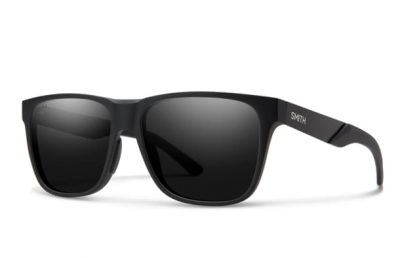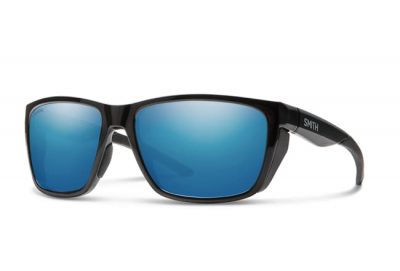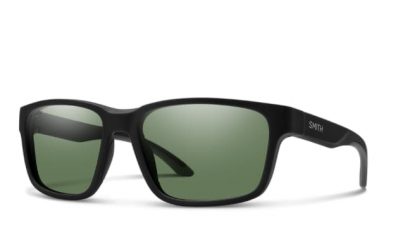
There are certain professional sports that require high quality equipment to assist the game. Golf is one of them.
With many professionals or serious players wanting the best of the best when it comes to glasses, and increasing the quality of game.
Unfortunately, there have been many misconceptions about what is the perfect eyewear for Golf and a lot of eyecare professionals have done a poor job in explaining that.
Today we are looking beyond polarising, UV-protection and blue-blocking sun lenses and are about to step into a new zone specifically designed for the dedicated sports individual:
Performance sunglasses.
Golfers have a proven track record and willingness to spend unrestricted dollars in pursuit of the promise of improved performance.
According to the National Golf Foundation, the “core” golfer plays an average of 37 full rounds a year and is primarily male with an average age of 40.
Professionally educated with an average income of $104,000, core golfers are very focused on products that promise to improve or enhance the golf experience.
Golfers can spend up to 150 hours per year immersed in the game under a hot and bright sun, and not only can the UV rays affect the skin, it can also do damage to their eyes if they are not protected well.
Ensuring proper eye health is an important factor, however, using sun tints such as blue or dark grey can actually hinder the performance of a golfer.
As Golf is such a visually demanding sport, it is important not only for the patient to know the science and importance behind proper eyewear, but the eyecare professional should thoroughly understand it all as well.
VISUAL ENVIRONMENT OF GOLF
Variable Lighting Conditions
During a four hour round of golf, the lighting will fluctuate from bright, sunny conditions to darkly overcast. Taking this into consideration, golfers also experience illumination, shadow and possibly fog.
Varying Distances
Being able to distinguish where a tiny white ball is amongst a variety of backgrounds including: white sand, grass, trees and other foliage, challenges the golfer’s eyes to its limit and could strain the eyes.
Varying Wind Conditions
Even the varying conditions of the wind play a role in the golfer’s eye coordination and calculation of where the ball is going to end up.
Depth Perception
To visually track a golf ball against a variety of backgrounds or ground levels, maintaining depth of field is essential.
Most performance lenses designed for golf feature transmittance levels approximately 15 to 20 percent greater than typical general purpose sunglasses.
Contrast Enhancement
To make a golf ball more distinct and easier for the eye to follow against the sky or ground, you need a sun lens that changes the eyes habitual colour response.
The most recommended general purpose sunglass colour, grey, is not favoured for golf precisely because it is a neutral filter.
Blue Light Filtering
Since a golf course is covered in grass, a performance golf lens features colours that suppress the blue end of the spectrum (since there is a blue haze due to water vapour in the air) These colours include amber, brown and green.
SMITH OPTICS GOLF LENSES
The Smith Optics lens enhances visual contrast, and the colour of the lens has a more neutral aesthetic for those who prefer a more casual look on the course.
The lens helps golfers see grass health and textures that might otherwise be missed, making it easier to see transitions between the different landscapes.
The separation of colours creates more depth cues to gauge distance for any shot from the tee box to the wider course, helping golfers easily differentiate grass conditions and grain direction to predict ball speed.
Below are 3 of our top picks of Smith Optics Frames we believe will benefit the wearer.
- SMITH LOWDOWN STEEL
Product Details
VISION
ChromaPop lenses enhance contrast and natural colour to make the details
100% uv protection
FIT/INTEGRATION
Medium fit, medium coverage
4-Base lens curvature is just right for everyday wear
Megan nose pads provide nonslip grip so glasses stay put
FRAME
Evolve bio-based frame material is lightweight and durable
Smith branded metal hinges
Lightweight, stainless steel temples
The Lowdown Steel have the classic looks that run through the family, but with a metal edge. The lightweight frames have soft rubber nose pads, so they don’t slide down when you break a sweat. Smith ChromaPop lenses dial up the detail and colour, so you see as sharp as you look.
2. SMITH LONGFIN (RX OPTION)
Product Details
VISION
ChromaPop polarised lenses cut glare and enhance colour and contrast
Smudge and moisture resistant coating for easy cleaning and clear optics
Anti-reflective improves clarity and reduces eye strain
100% UV protection
FIT/INTEGRATION
Medium fit, medium coverage
6-base lens curvature provides a modest wrap-around fit
Megan side shields and thin, flexible
FRAME
Lightweight, flexible and durable TR90 frame
AutoLock hinges hold frames open for easy one-hand on and off
Keep up with changing light conditions and stay comfortable while you’re at it in these Smith Longfin sunglasses. Integrated side shields and ChromaPop polarised lenses reduce glare and enhance contrast as you scan the water or course. Thin, flexible temples keep these glasses snugly in place so you don’t have to worry about losing them to the depths.
3. SMITH BASECAMP (RX OPTION)
Product Details
VISION
ChromaPop lenses enhance contrast and natural colour to make the details pop
100% UV protection
FIT/INTEGRATION
Medium fit, medium coverage
6-base lens curvature provides a modest wraparound fit
Megan temple and nose pads provide nonslip grip so glasses stay put
FRAME
Autolack hinges hold frames open for easy one-hand on and off
Reliable and crazy comfortable, our Basecamp sunglasses are prepped for whatever outdoor activity you have in mind. No-slip nose pads and temples keep them in place so they won’t slip off when you start to sweat. They may look casual with their 6-base frame but they have a secret performance edge with ChromaPop lens options that let you see with amplified detail and enhanced colour.
COLOUR, GLARE AND THE GOLFER’S EYE
It is important to understand the right colour tint for the lens tint to ensure it can emphasise the ball rather than the grass. Therefore, golf-specific tints should simultaneously:
- Filter short visible blue light, which reduces haze
- Allow some long wavelength blue light, which improves ball visibility
- Allow just enough green spectra to enhance visibility of ground contour
- Suppress yellow wavelengths, which contribute to eye fatigue
- Allow some red wavelengths to pass, which helps in reading grassy contours
When a golfer “reads” a green, they’re trying to subconsciously process how the following factors will combine to influence both ball speed trajectory during putting:
- Slope
- Grass length
- Moisture level (in and on the grass)
- Base (firmness of ground)
- Wind
- Grain (blades facing the same direction)
THE PERFECT GOLF FRAME
Just as important as the golf performance lenses design, its important to discuss the essential frame design:
- Lightweight: It should fit comfortably, stay in place and should not distract the golfer
- Wraparound construction: Golfers depend on peripheral vision: Non-distorting lenses that fully wrap around the eye are essential to not only block glare, but to deliver a wide unobstructed field of view
- Deep lenses for looking down: Adjustable temples and bridges are required to avoid the golfer having to constantly move their head so their eye gaze doesn’t get obstructed by the frame edges. This helps to tailor-fit an uneven head and optimise the tilt of the lenses.
These may sound expensive, however, they are quite affordable ranging from $129 to $300. With all the added features and the quality of frame/lenses for the performance golf sunglasses, you are getting more than your money’s worth.
IS IT WORTH POLARISING?
That is the question most often debated. This really depends on the golfer’s everyday life and how they would benefit from polarised lenses.
Not every golfer is professional and spends all their days out on the course. Through answering lifestyle questions, the eyecare professional will be able to gauge whether you should have polarised lenses for golf.
THE IMPORTANCE OF DEPTH OF FIELD
To ensure a player’s pupil avoids becoming overly dilated, which reduces depth of field, performance golf lenses are generally designed to transmit 15 to 20 percent more light, compared to a general purpose sunglass.
These higher transmittance levels will also provide players who steadfastly resist wearing minor prescriptions, with better overall vision.
Today, no one is better suited than a local eyecare professional to guide the golfer or sportsman in the selection of a specially designed and engineered sunglass that will protect their eye health and maximise visual performance.
Adelaide City Optometrist hold a selection of Smith Optics sunglasses to sample, and our eyecare professional’s will be able to discuss further which lenses are better suited for you.




